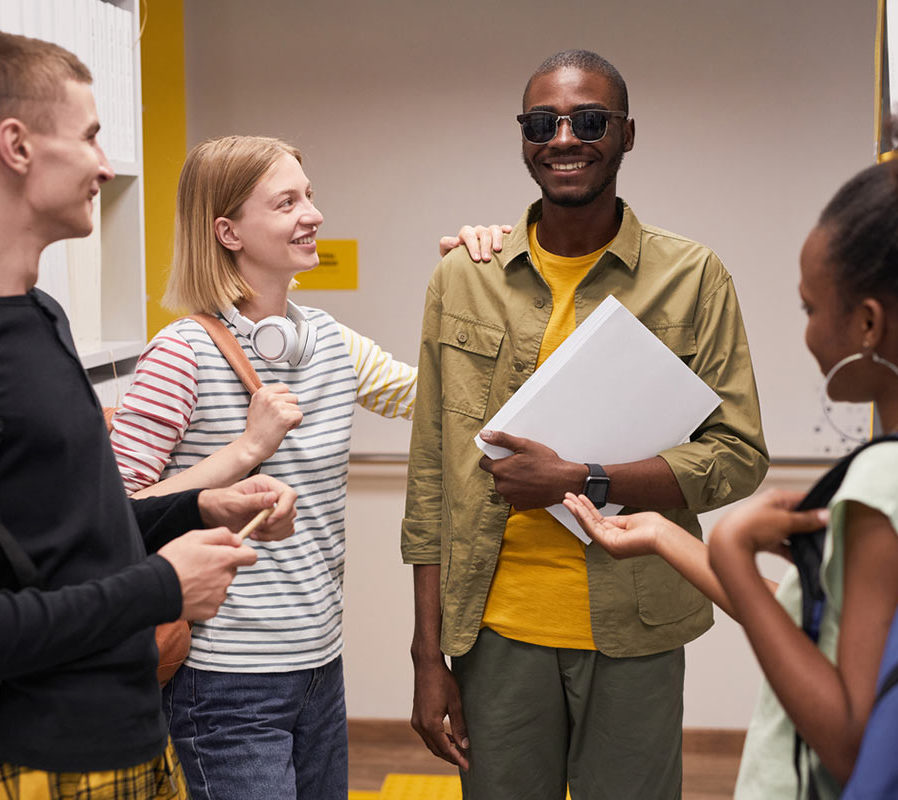Introduction
Ableism within postsecondary teaching and learning contexts disadvantages and discriminates against disabled students and staff. Ableist assumptions are embedded in all aspects of teaching and learning institutions and need to be addressed. The first step to eradicating ableism in our teaching and learning institutions is to identify where, how, and why it is entrenched in our institutional norms and practices. This article provides an overview of how ableism operates within teaching and learning contexts.
Before we dive into the topic of ableism in postsecondary teaching and learning contexts, you may want to check out the article on ableism and disablism. As a refresher, ableism and disablism are forms of discrimination and social prejudice against people with disabilities. Ableist assumptions are inherent within individual, structural, systemic, and cultural levels of institutions.
Sometimes the terms ableism and disablism are used interchangeably although the emphasis of both is a bit different. In this article, we speak of ableism but encourage you to keep in mind how teaching and learning contexts uphold both ableist and disablist beliefs.
Below we provide a brief overview of academic ableism and how it operates within teaching and learning contexts. For an in-depth perspective, we strongly recommend reading Jay Timothy Dolmage’s Academic Ableism Disability and Higher Education that is available in open access. For Dolmage (2017), postsecondary institutions and academia “powerfully mandate able-bodiedness and able-mindedness, as well as other forms of social and communicative hyperability.” Simply put, education is often not designed with disability in mind.
The Construction of Ableism in Postsecondary Educational Practices
It is no surprise that ableist practices are normalized within postsecondary education institutions. Much of the education system is designed with a very specific kind of learning in mind and reinforces ideological notions of ‘normal.’ Disabled individuals are disadvantaged and excluded in teaching and learning contexts through acts of ableism.
A common occurrence is that ableism and barriers are construed as an individual’s problem rather than being systemically rooted in the foundations of higher education. For instance, accessibility and disability services often emphasize the individual seeking access rather than the larger barriers preventing access (Gillies and Dupuis, 2013). Accessing such services is largely informed by medical language and diagnoses, which ultimately “reinforces the medicalization of disability thereby situating and framing disability accommodation at the individual level rather than the institutional level” (Saltes, 2020). This framing of disability as individualized and medicalized within higher education results in the consequence that “disabled individuals do not always fit” (Waterfield, Began, & Weinberg, 2018). Further, accommodations do not get at the heart of ableism. Accommodations are retrofits to an inaccessible environment that do not empower us to make changes. Often it is the students who must advocate for change and request more inclusive educational options. By ignoring the broader systemic foundations of ableism within our institutions, we put the burden of eradicating ableism on the same individuals who are experiencing it.
Faculty and Staff
Certainly, when we think about accessibility in higher education, we often focus on the student experience with less thought given to faculty and staff. Many articles and recommendations around disability in academia focus on students and initiating change for students (Brown & Leigh, 2018). When we consider how ableism is embedded in and operates within our institutions, we must also consider the faculty and staff who are impacted. A review of disability accommodation polices for faculty at 42 Canadian universities revealed large discrepancies and inconsistencies pertaining to policy implementation and content (Saltes, 2020). Further, disability is often either reduced or erased when situated in all-encompassing policies of ‘inclusion’ or ‘accommodation’ As Satles points out, this kind of reduction of disability within broader notions of accommodation is problematic as it does not address “the unique and wide-ranging barriers that disabled people experience” (2020).
Ableism and Inaction
Dolmage (2017) writes about something he calls ‘ableist apologia’— the belief that higher education is, of course, ableist, but there is nothing we can do about it. Dolmage (2017) defines ableist apologia as describing:
“a genre or category of statements and sentiments that distance the speaker from responsibility for the selective, stratifying forces within higher education, selecting and stratifying functions that depend upon ableism and disablism to make sure that privilege is portioned out only along traditional lines: to ensure that students who move, think, or express themselves outside of a narrow set of norms will not thrive or survive in college.”
These beliefs operate in tandem with ableism and maintain the very ableist practices they are often excusing. When we claim we cannot change a standardized practice because “that’s the way we do things around here” or “we cannot offer you access to x because of y” we are removing ourselves from the responsibilities we have to dismantle ableism within teaching and learning contexts.
Summary/Key Takeaways
While historically ableism has been embedded in the fabric of higher education, it does not mean that we are powerless to change it. We have a collective responsibility to address the negative experiences of ableism that exist within our institutions. The first step to creating accessible teaching and learning environments is to identify the ableist practices embedded in our day-to-day norms in academia and then change them. By recognizing the ways that people with disabilities experience ableism within our institution, we are better equipped to address these inequities.



